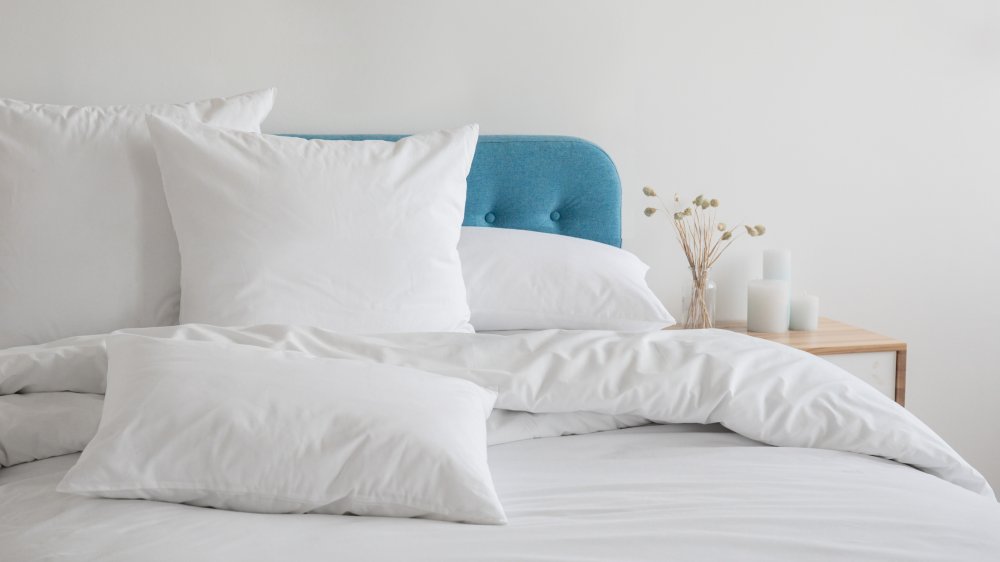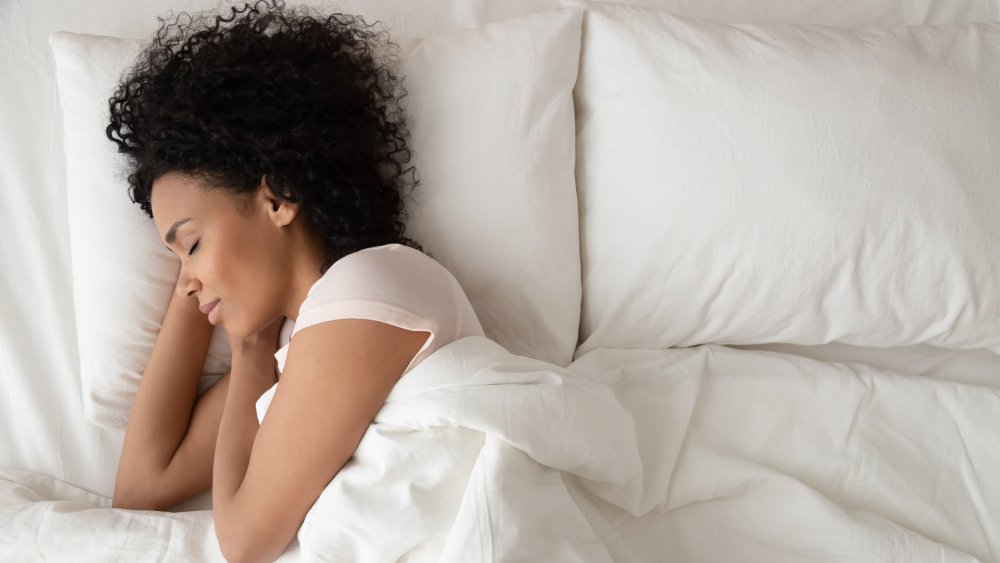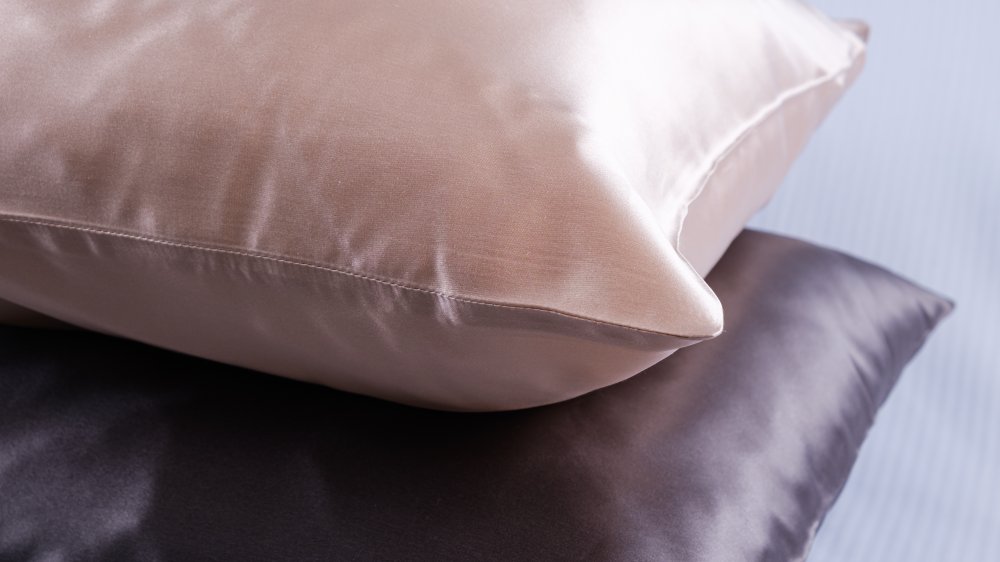The Sleeping Mistake That's Adding Years To Your Face
Sleeping seems like the most innocent of actions, but it can be a huge contributing factor to how well you age, even when it comes to your skin. You could have the best lineup of products and religiously follow a strict skincare regimen, and your sleeping habits can still undo all your work and effort. How? It's all in the way you position yourself for a good night's rest.
While there is absolutely nothing wrong with the aging process, the issue is premature aging, specifically caused by something that's easily avoidable — sleeping incorrectly in this case. If you're a chronic stomach sleeper or even a side sleeper, this can be contributing to the formation of fine lines and wrinkles on your face. Dr. Anthony Youn, a board-certified plastic surgeon told The List previously, "Sleep wrinkles are real and can be permanent. Sure, sleeping on your face for a night after a bender won't create permanent lines, but if you sleep on your face night after night, year after year, then those sleep wrinkles will eventually stay there permanently."
While it may come as a surprise, according to aesthetician Renée Rouleau, who spoke with Byrdie, sleeping is actually the second leading cause of wrinkles, following sun exposure. So while you may feel rested, your skin might be taking the brunt of it. Luckily, there are a few things you can do to prevent this from turning into a larger issue.
The healthiest sleeping position
The key to counteracting this problem is adjusting the way your sleep. But switching up your sleeping position is not easy. It's not impossible though, and by sleeping on your back — or side if you must — you can make a huge difference in the appearance of your complexion. Not just that, but Healthline states that sleeping on your back can also be best for your overall health, protecting your spine, and helping to keep pesky knee pain at bay.
It's worth noting back sleepers do not get all the kudos, in some cases. This position can be a contributor of pain depending on other underlying conditions you may have. Johns Hopkins Medicine says that folks with neck pain, acid reflux, and sleep apnea may be better off snoozing on their stomachs or sides. The bottom line is, it's really a matter of preference and what's most important to you when it comes to your body.
Other ways to prevent sleeping lines
If you're a stomach sleeper who's now filled with dread at the thought of trying to wrangle your body into the right sleeping position night after night, don't fret. While it is important, this isn't the only way you can counteract the lines that tend to come after a long night's rest. Consider the type of sheets you sleep on, too. Swap out those old pillowcases that you've been relying on with ones made of silk (via Byrdie). I you're finding silk to be a bit too expensive, try satin or sateen.
There are two reasons why this helps: Silk or similar doesn't crease and fold your skin like other fabrics and it also reduces friction between your body and your bedding (via Allure). You'll also get two benefits in one, since silk pillowcases can put a damper on frizzy locks and hair damage.
Aside from bedding options, where the rest of your body ends up during your sleep cycle is also important. Rachel Nazarian, MD also tells Byrdie that if your hands are smushed against your face while you sleep, this can contribute to more lines and funny creases. Even if you can't avoid the inevitable face plant into your pillow, try slipping your hands beneath the pillow so they're not touching your face.
Will your skincare routine help sleep wrinkles?
This isn't quite a straightforward answer, but in some ways a skincare routine can address sleep wrinkles. Your main priority should be changing your actual habits if sleep wrinkles are a cause for concern to you, but your skincare routine of course will be beneficial in prevention in the first place. Without your serums, creams, and other special formulas, you'll solely be relying on sleep to keep away those fine lines — so a mix of products and habits will be far more potent.
That being said, if you only rely on what's sitting in your bathroom cabinet, you won't have much luck reversing those lines. "They can be treated with wrinkle creams and fillers such as Juvederm and Restylane, but they will likely come back or develop in adjacent areas if you don't address the real problem, which is facial compression," Dr. Goesel Anson said to Harper's Bazaar. Like most issues, prevention is key, not solving after the fact.



